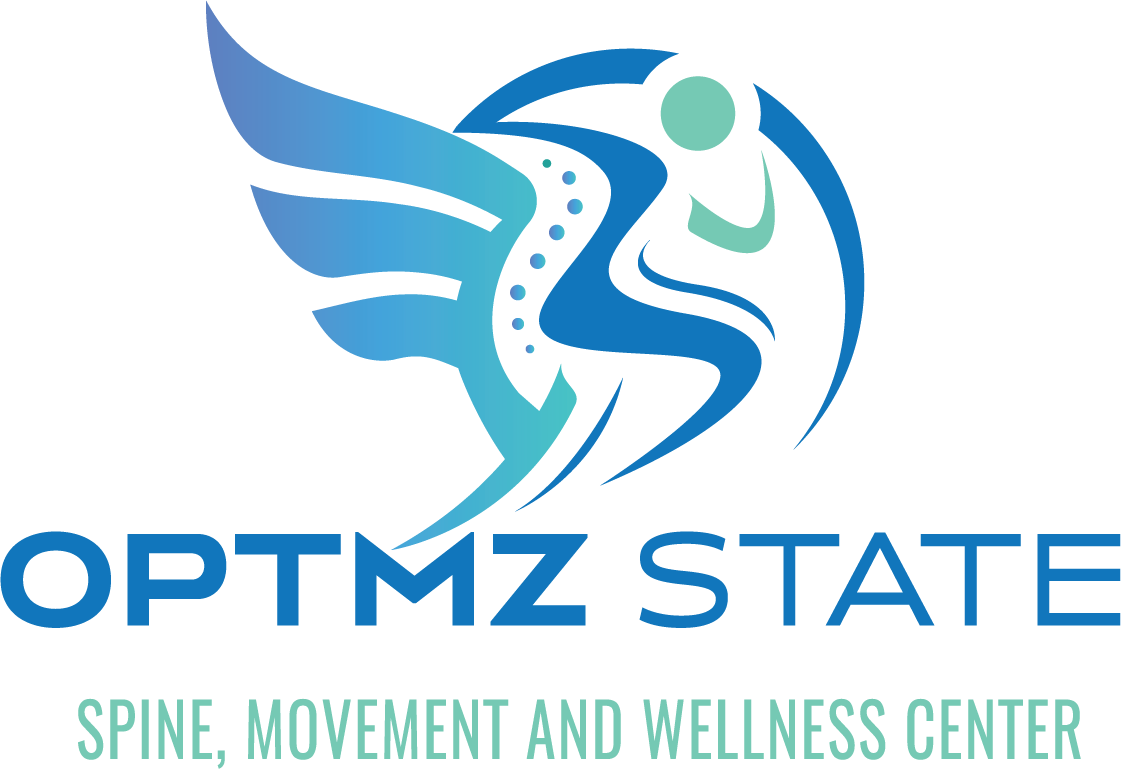If you're dealing with lower back pain, you might be curious about the role chiropractic care can play in your recovery. Chiropractors use various techniques to not only relieve pain but also enhance your overall mobility and posture. From spinal adjustments to personalized exercise plans, these approaches tackle both the symptoms you're experiencing and the underlying issues. But what specific methods could be most effective for you, and how do they work in practice? Exploring these aspects could reveal valuable insights into your path to relief.
Understanding Lower Back Pain
Lower back pain is a common issue that affects millions of people, often stemming from various causes like muscle strain, poor posture, or underlying medical conditions. You might find that your discomfort arises after lifting something heavy, sitting for prolonged periods, or even from a sudden twisting motion. Understanding the nature of your pain is essential in finding effective relief.
First, assess the type of pain you're experiencing. Is it sharp, dull, or a constant ache? These characteristics can help pinpoint the source. For instance, sharp pain could indicate a muscle strain, while a dull ache might suggest a more chronic condition.
Next, consider your daily habits. Are you slouching at your desk or lifting items incorrectly? Poor posture can lead to muscular imbalances, which often contribute to discomfort.
It's also important to recognize the role of physical activity. While it's easy to avoid exercise when your back hurts, staying active is crucial for maintaining strength and flexibility. Gentle stretches or low-impact exercises can help alleviate some of the tension.
You should also pay attention to your sleep environment. A mattress that doesn't provide support might exacerbate your pain.
Role of Chiropractic Care
Chiropractic care plays an essential role in relieving lower back pain through targeted spinal manipulation techniques.
You'll find that these methods not only address the pain but also promote overall wellness by focusing on holistic treatment.
Understanding how these approaches work can help you make informed decisions about your health.
Spinal Manipulation Techniques
While many treatment options exist for back pain, spinal manipulation techniques stand out as a cornerstone of effective chiropractic care. These techniques involve hands-on adjustments to realign the spine and optimize its function. When your spine is properly aligned, it can alleviate pressure on nerves, reduce inflammation, and promote healing.
During your chiropractic session, your chiropractor will evaluate your condition and develop a tailored treatment plan. Techniques may include high-velocity low-amplitude adjustments, which can produce a popping sound as air is released from the joint spaces.
You might also experience softer techniques, such as the activator method, which uses a specialized instrument to apply gentle pressure.
You may notice immediate relief after a session, but it's crucial to stick to your treatment plan for long-term benefits. Regular adjustments can help maintain spinal alignment, improve mobility, and prevent future episodes of pain.
Your chiropractor may also guide you on exercises and lifestyle changes that complement your spinal manipulation, ensuring a thorough approach to your health. Embracing these techniques can lead you down a path of sustained relief and enhanced quality of life.
Holistic Treatment Approach
A holistic treatment approach to lower back pain emphasizes the interconnectedness of your body, mind, and overall well-being. When you seek chiropractic care, your chiropractor doesn't just focus on your spine; they consider how various factors affect your pain. This includes your lifestyle, stress levels, and emotional health.
Chiropractors often use a combination of spinal adjustments, therapeutic exercises, and lifestyle advice to address your discomfort. By realigning your spine, they help improve your body's function and alleviate pain.
But they also encourage you to adopt healthier habits, such as proper nutrition and regular physical activity, which play a vital role in your recovery. Additionally, they may introduce relaxation techniques or mindfulness practices to help manage stress, which can contribute to your back pain.
By treating you as a whole person rather than just a collection of symptoms, chiropractic care empowers you to take control of your health. Incorporating this holistic approach not only targets your lower back pain but also enhances your overall quality of life.
You'll likely find that when your body and mind work in harmony, you'll experience lasting relief and improved well-being.
Spinal Adjustments Explained
Spinal adjustments are a key part of chiropractic care, aimed at improving your spine's alignment.
Various techniques are used to perform these adjustments, each designed to target specific issues in your lower back.
Understanding the benefits of these adjustments can help you appreciate how they contribute to your overall pain relief and mobility.
Definition of Spinal Adjustments
When you think about lower back pain relief, understanding spinal adjustments is essential. These adjustments are specific movements aimed at correcting misalignments or dysfunctions in your spine. By restoring proper alignment, spinal adjustments can alleviate pain, improve mobility, and enhance overall function.
Here are some key points about spinal adjustments:
- They're performed by trained chiropractors who use precise techniques.
- Adjustments can reduce nerve irritation caused by misaligned vertebrae.
- They promote better blood circulation, aiding in the healing process.
- Spinal adjustments can help improve posture and prevent future issues.
- They're often combined with other therapies for a holistic approach to pain relief.
Techniques Used in Adjustments
Though various techniques exist for spinal adjustments, each method shares the common goal of restoring proper alignment to the spine.
One popular approach is the Diversified Technique, where you might experience high-velocity, low-amplitude thrusts aimed at specific vertebrae. This method is effective in addressing misalignments and can provide immediate relief.
You may also encounter the Gonstead Technique, which emphasizes a thorough analysis of spinal mechanics. Here, your chiropractor will use precise adjustments tailored to your unique spinal structure. This technique often involves a specific table that helps enhance the adjustment process.
Another widely used technique is the Activator Method. With this approach, your chiropractor uses a small, handheld instrument that delivers a gentle impulse to the affected area, which can be particularly beneficial for those who prefer a less forceful treatment.
Soft tissue techniques, such as myofascial release, may also be incorporated into your adjustment sessions. These methods focus on relaxing tense muscles and improving blood flow, which can complement the spinal adjustments.
Ultimately, the technique your chiropractor chooses will depend on your specific needs and the underlying issues affecting your lower back.
Benefits for Lower Back
After exploring various techniques used in adjustments, it's important to understand the benefits these spinal manipulations can offer for lower back pain.
Spinal adjustments aren't just about cracking your back; they can markedly improve your quality of life. Here are some key benefits you might experience:
- Pain Relief: Many patients report immediate relief from lower back pain after adjustments.
- Improved Mobility: Chiropractic care can increase your range of motion, allowing you to move freely.
- Enhanced Posture: Regular adjustments can help align your spine, promoting better posture in daily activities.
- Reduced Muscle Tension: These manipulations can alleviate tension in surrounding muscles, making movement easier.
- Overall Well-Being: Chiropractic care not only addresses pain but also contributes to your overall health by improving nervous system function.
Therapeutic Exercises and Stretches
Therapeutic exercises and stretches play an essential role in alleviating lower back pain, and incorporating them into your routine can make a significant difference. These activities help strengthen your core, improve flexibility, and promote better posture, all of which are vital for maintaining a healthy back.
Start with gentle stretches to loosen your muscles. The cat-cow stretch is a great way to warm up your spine. Get on your hands and knees, arch your back while inhaling, and then round it while exhaling. Repeat this several times to increase mobility.
Another effective stretch is the knee-to-chest stretch, which can relieve tension in your lower back. Lie on your back and pull one knee toward your chest, holding for 20-30 seconds before switching legs.
Once you feel comfortable with stretching, consider adding strengthening exercises. Planks are excellent for building core stability, which supports your lower back. Begin in a push-up position, keeping your body straight from head to heels. Hold the position for 20-30 seconds, gradually increasing the time as you get stronger.
Incorporating these exercises into your routine just a few times a week can enhance your flexibility and strength, ultimately reducing pain and preventing future issues.
Always consult with a healthcare professional before starting any new exercise regimen, especially if you're experiencing significant discomfort. Remember, consistency is key; the more regularly you perform these exercises, the more effective they'll be in managing your lower back pain.
Other Chiropractic Techniques
While therapeutic exercises and stretches are essential for lower back pain relief, other chiropractic techniques can also provide significant benefits. These methods can complement your exercise routine, helping to enhance mobility and alleviate discomfort.
Here are some techniques you might encounter during your chiropractic care:
- Spinal Manipulation: Direct adjustments to your spine can improve alignment and reduce pain.
- Massage Therapy: Targeted soft tissue work can relieve muscle tension and promote relaxation.
- Electrical Stimulation: This technique uses low-voltage currents to reduce pain and increase blood flow.
- Ultrasound Therapy: Sound waves penetrate deep tissue, promoting healing and reducing inflammation.
- Hot and Cold Therapy: Alternating heat and ice can manage pain and reduce swelling effectively.
Each of these techniques addresses different aspects of lower back pain, and your chiropractor will tailor the approach based on your specific needs.
You might find that a combination of these methods maximizes your relief and supports your recovery. The goal is to create a thorough treatment plan that not only targets your current pain but also helps prevent future issues.
By integrating these chiropractic techniques with your therapeutic exercises, you'll be better equipped to manage your lower back pain. So, don't hesitate to discuss these options with your chiropractor to see what might work best for you.
Incorporating these strategies can lead to a more effective and holistic approach to your health.
Benefits of Chiropractic Treatment
Chiropractic treatment offers a range of benefits that can considerably improve your overall well-being, especially when combined with other techniques like spinal manipulation and massage therapy. One of the most significant advantages is pain relief. Many people experience a reduction in lower back pain after just a few sessions, allowing you to return to your daily activities without discomfort.
In addition to pain relief, chiropractic care can enhance your mobility. Regular adjustments can help improve your range of motion, making it easier for you to perform physical activities and even simple tasks like bending or lifting. This increase in flexibility can also help prevent future injuries.
Chiropractic treatment often leads to improved posture. By aligning your spine, you can correct postural imbalances that may lead to pain or discomfort. Good posture not only alleviates pressure on your spine but can also enhance your overall appearance and confidence.
Moreover, chiropractic care can contribute to better sleep. Many individuals report improved sleep patterns after treatment, as reduced pain and tension make it easier to relax and fall asleep. Better sleep can have a cascading effect on your health, boosting your mood and energy levels throughout the day.
Lastly, chiropractic care can enhance your overall well-being by promoting a holistic approach to health. By focusing on the musculoskeletal system and its connection to your nervous system, you're more likely to experience improved mental clarity and emotional balance.
Embracing chiropractic treatment can lead to a healthier, more vibrant life.
What to Expect During Visits
When you arrive for your first chiropractic visit, you can expect a thorough evaluation of your condition. This evaluation is essential for understanding the root cause of your lower back pain and will help your chiropractor develop an effective treatment plan tailored to your needs.
Here's what you can typically expect during your visits:
- Detailed medical history: You'll discuss your past injuries, medical conditions, and any treatments you've tried.
- Physical examination: Your chiropractor will assess your posture, spine alignment, and range of motion.
- Diagnostic tests: If necessary, they may suggest X-rays or other imaging tests to get a clearer picture of your spine and surrounding tissues.
- Discussion of findings: After the examination, your chiropractor will explain their findings and how they relate to your pain.
- Treatment plan: You'll work together to create a personalized plan that may include adjustments, exercises, and lifestyle recommendations.
During each visit, treatments typically involve spinal adjustments, which are gentle manipulations aimed at restoring proper alignment.
You might also receive advice on posture, ergonomics, and exercises to strengthen your back. Most importantly, your chiropractor will encourage you to ask questions and express any concerns, ensuring that you feel comfortable and informed throughout the process.
Conclusion
Ultimately, chiropractic care offers a holistic approach to relieving lower back pain through spinal adjustments, therapeutic exercises, and various techniques tailored to your needs. By addressing both symptoms and underlying causes, you can enhance your mobility and overall well-being. If you're struggling with back pain, consider visiting a chiropractor to explore personalized treatment options. With the right care, you can find relief and regain control of your life, enjoying better posture and improved health.



